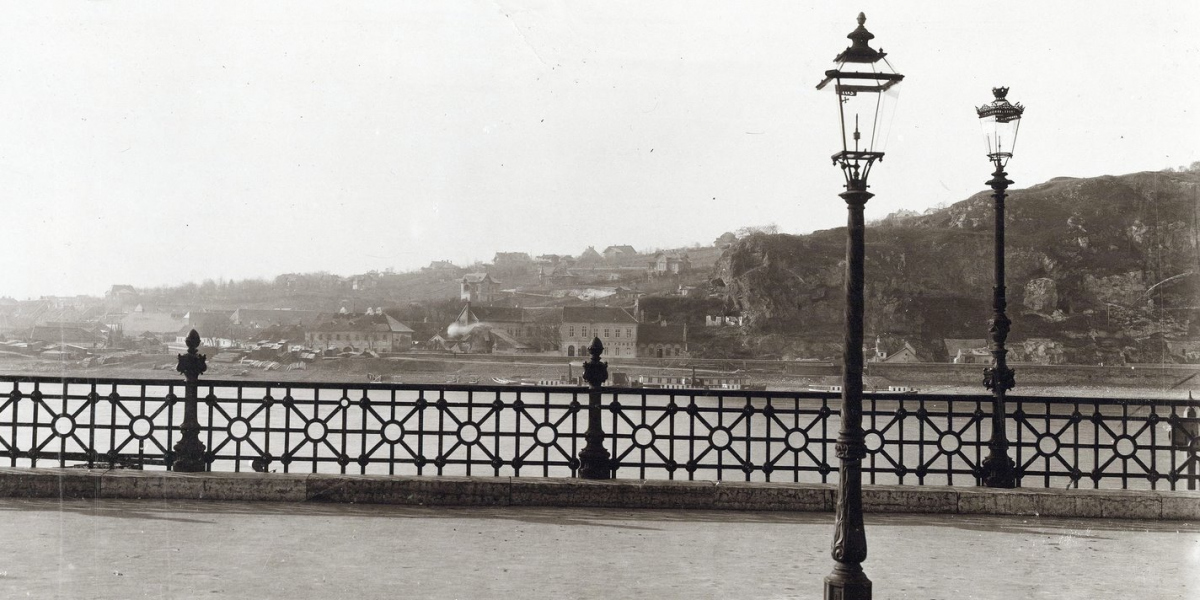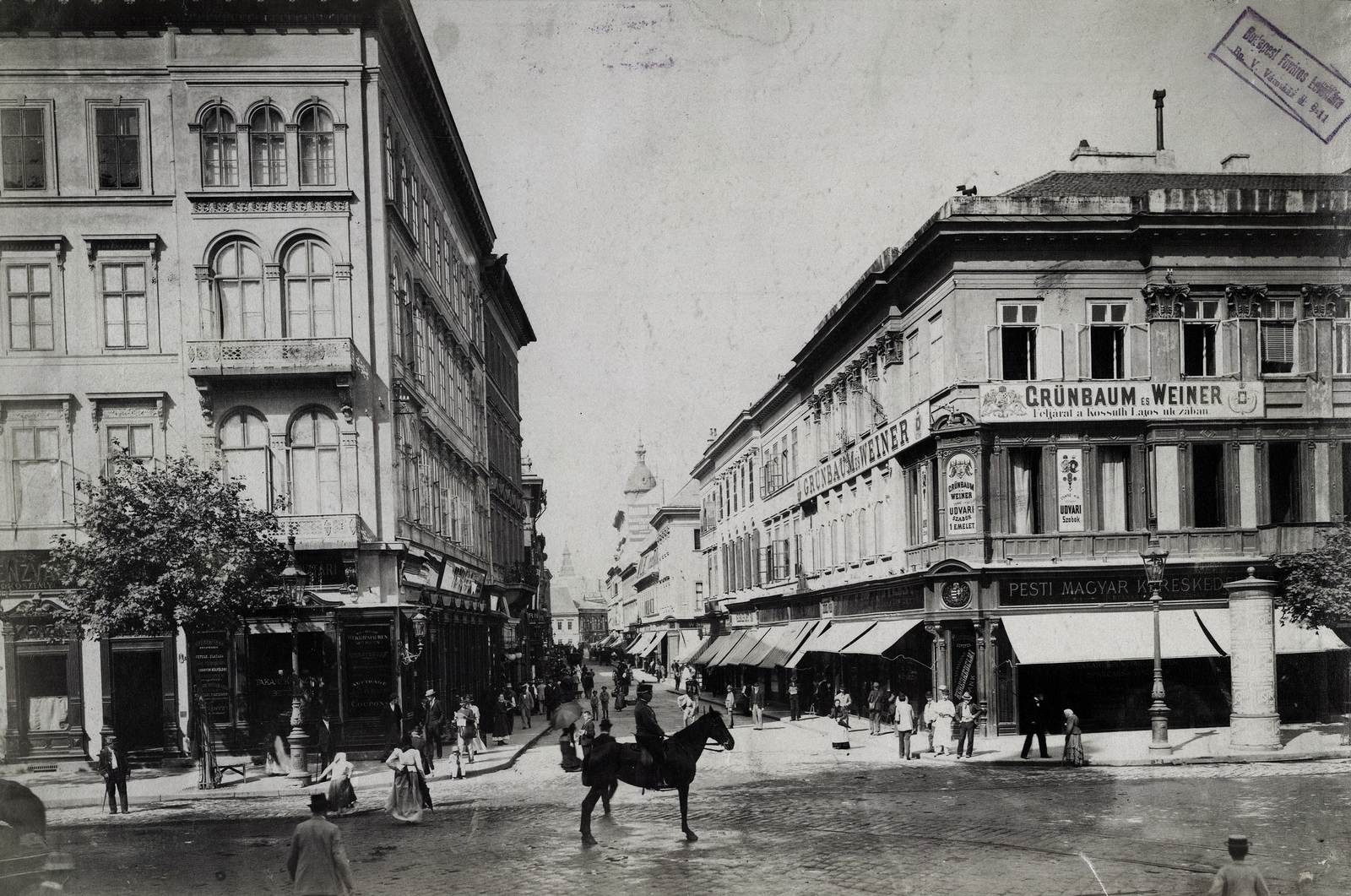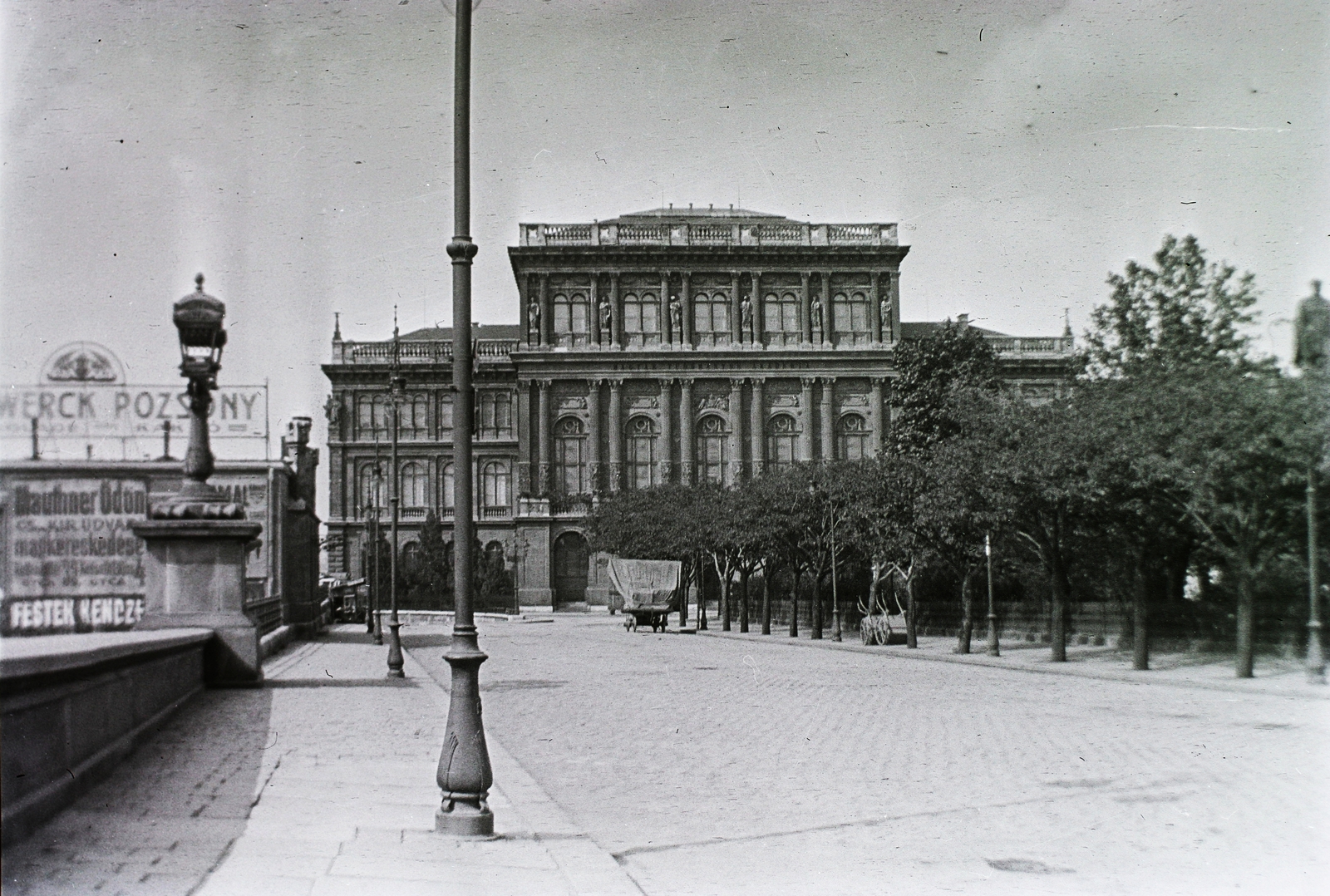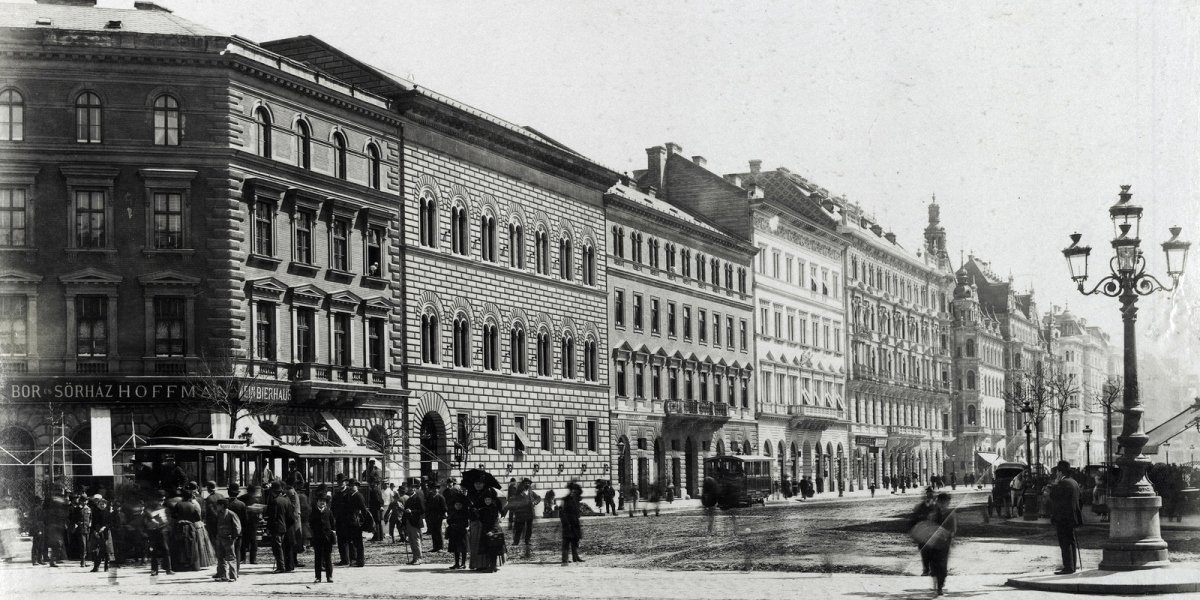The use of gas has made a significant difference to public lighting. In the cities, the night streets were dangerous for a long time, as pedestrians could easily be robbed in the dark. Anyone who had a job in the evening after dark had to take care of the lighting themselves, either by carrying a lantern themselves or hiring a lamp carrier — typically children.
Although there was some public lighting in Pest and Buda, there were oil lamps on the streets in Buda from 1777 and in Pest from 1790, but neither of the cities could be said to have bathed in bright light. Part of the pay for the actors at the National Theatre was two candles a day to have them lit on the way home.

Gas lamps spread rapidly in Budapest. By the end of the 19th century, thousands of lamps were already scattering light (Photo: Fortepan/ Budapest Archives, Reference No.: HU.BFL.XV.19.d.1.08.012)
The breakthrough in public lighting was the appearance of city gas (illuminating gas). City gas is different from the natural gas used today, as the former was produced from coal in gasworks. It had the great advantage of being relatively easy to transport in pipes and was used as early as 1807 for street lighting in London.
It was not used for a long time in the street lighting of Buda and Pest, but after the Revolution and War of Independence of 1848-1849, an imperial decree in 1850 required the cities to build public lighting, and this gave a boost to its spread. The first gas factory for the production of this gas in Pest was built in 1856 and did not only supply illuminating gas to the public. On today's Rákóczi Road, the first street gas lamps were lit on 24 December 1856. The city entered into a 25-year contract with the Pest gas company, according to which the company was required to set up and operate the lamps, and the city would pay annually - 56 forints 42 kroner for the lights lit from 6 pm to dawn, and 30 forints 36 kroner for lights lit from 7 pm. According to the statements, even the lamps installed for the first time saved 13 thousand forints a year compared to the oil lamps.

Gas lamp, billboard, tram, paved street in Budapest: a big city at the end of the 19th century (Photo: Fortepan/Budapest Archives, Reference No.: HU.BFL.XV.19.d.1.07.002)
The contract stipulated that if a new, cheaper street lighting system was invented within 25 years, the company will undertook to introduce it in Pest within 3 years.
On 15 March 1857, the Vasárnapi Ujság wrote about the gas lamps in Pest:
"Currently, only the Downtown, Lipótváros, and part of Józsefváros are lit by gas, but by the meaning of the contract, the whole of Pest will be equipped with it (with at least 957 lamps) this summer, so that only 100 oil lamps will survive, which will burn on the outskirts and side streets of the suburbs.”
The gas company, of course, supplied gas not only to the street lamps, but also to the residential buildings that could be connected to the network. In this regard, the above mentioned article noted the following:
“This gas is still 1/8 cheaper than oil in our places, where a large space has to be lit, but where a candle was enough, it is not profitable, and it costs 2-3 times as much, because in large places a gas flame gives as much light as 3-4 candles, so in such places 1 gas flame is sufficient instead of 3 candles.”
At that time, the gas lighting was only available in Pest, as no gas pipe was connected to Buda. The streets of Buda could only be illuminated after the gas pipeline was passed through the Chain Bridge in 1862, for which the Chain Bridge Company, the owner of the bridge, asked for 500 HUF a year. By the way, the bridge had already been lit with gas for 3 years. In the case of the bridge, gas lighting was significantly cheaper than oil and also gave more light. (True, it was not enough, there were still a lot of complaints about the bridge because it was dark at night.)

Gas lamps appeared everywhere and lit the streets in yellow (Photo: Fortepan/No.: 86050)
At the time of the unification of the city, in 1873, a total of 2170 gas lamps were operating in Budapest. In the following decades, gas lighting became widespread, but only slowly squeezing out the oil lamps; in 1896, a quarter of the street lamps in Budapest were still oil lamps, in addition to the 10,000 gas lamps, there were 2,565 oil lamps.
The repression of gas lamps was caused by the advent of electric lamps. Not only were they gave stronger light and they were cheaper, but they did not have to be lit and extinguished individually than gas lamps.
Interestingly, gas lamps in the XX. even the XXI. they did not disappear completely in the 16th century. Gas lamps still operate in Budapest to this day. It is very easy to recognise them, because the flame burns in them even during the day, because today it is cheaper to burn them 24 hours a day, as if they had to light them every night and put them out in the morning.
Cover photo: Gas lamps on the Oktogon (Photo: Fortepan/Budapest Archives, Reference No.: EN.BFL.XV.19.d.1.08.032)




































Hozzászólások
Log in or register to comment!
Login Registration